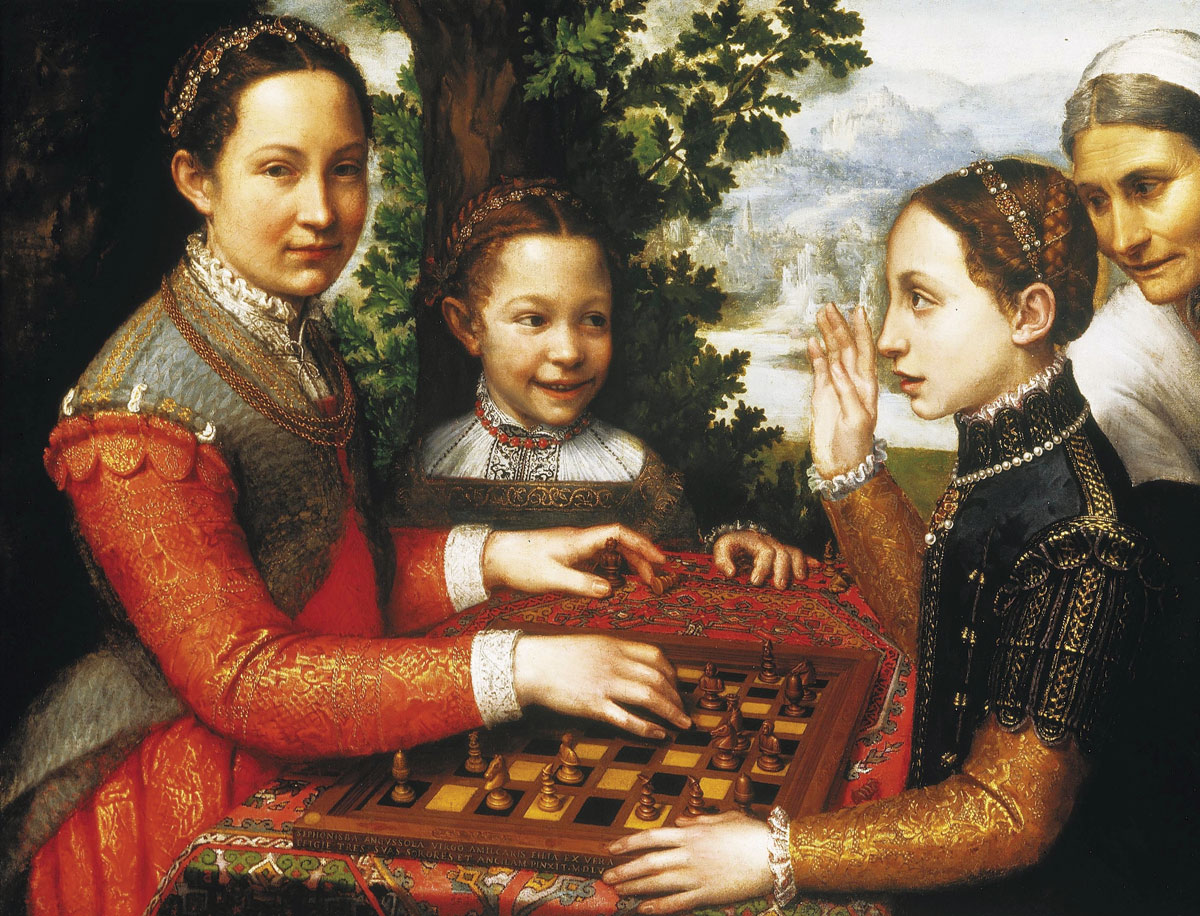Gendered Dialogues
Hum 211/212 reframes the Renaissance through the study of women.
Historian Joan Kelly-Gadol famously asked, “Did women have a Renaissance?” This question frames Hum 211/212’s engagement with gender in late medieval and early modern European art, literature, politics, and culture.
Renaissance Europeans were highly attuned to gender, which profoundly shaped societal hierarchies and norms. Women’s lives were usually defined by their roles as daughters and wives, and legal restrictions constrained their ability to control property or act without the approval of a male guardian. Some women enjoyed access to educational, economic, and political opportunities, though often not those available to men. Contemporary medical and religious doctrines asserted that women were driven by their physical desires and prone to irrationality (traits that made them especially vulnerable to Satan’s lures), which further entrenched misogyny. Even virtues were gendered. Men were praised for courage, wisdom, and power, while women—even female rulers—tended to win renown for their piety, chastity, modesty, and obedience.
Gender permeated late medieval and early modern European culture. Niccolò Machiavelli’s political vision, for instance, was explicitly masculine. A famous passage in his seminal treatise The Prince describes how a leader with virtù (vir, man in Latin) could use boldness, strength, and calculation to prepare for the onslaughts of the unpredictable (and feminine) fortuna. On the other hand, Baldassare Castiglione, an Italian courtier, described the power women held at court in their promotion of civility, decorum, and sprezzatura, or studied nonchalance. The authority wielded by figures such as the Duchess Elisabetta Gonzaga and her companion Emilia Pia at the court of Urbino tempered and restrained the aggression of male courtiers. Marriage, meanwhile, served as a potent religious and political metaphor. Faith “unites the soul with Christ as a bride is united with her bridegroom,” Martin Luther wrote, emphasizing how Jesus took on the “sins, death, and damnation” of humanity while bestowing “grace, life, and salvation” on his figurative spouse. Around the same time, statesman and philosopher Thomas More offered a scathing critique of Renaissance English society and morality through his description of the families inhabiting the fictional island of Utopia.
The lives and works of several women enable us to explore the gendered tensions and dialogues that permeated early modern European society and culture. Marguerite de Navarre, the sister of the early 16th-century French King Francis I, was widely admired for her intelligence and diplomatic prowess. Married for political reasons to men who shared few of her inclinations, and viewed with suspicion by many in the Church, Marguerite was nevertheless crucial to the promotion of humanist culture and religious reform movements in France. Her most famous work, The Heptameron, a collection of 72 short stories, challenged male depictions of courtly life and chivalric culture, and asserted women’s right to define their own experiences, contesting the dominant, masculine versions of reality and morality. Marguerite’s book centered the perspectives and interpretations of her female storytellers, creating a text that questioned and resisted the gendered double standards that defined their lives.
Gender biases also defined the early modern history of art. There were no female counterparts to such venerated artists as Clouet, Michelangelo, and Vermeer because women historically were excluded from the art academies and patronage systems that were essential to their training and commissions. Women could not participate in academic learning because they were prohibited access to the nude model. Barred from studying anatomy or drawing the nude from life, women artists could not execute history paintings, considered the most important genre of academic art making with its biblical, mythological, allegorical, literary, or historical subject matter. Instead, they turned to portraits, still lifes, landscapes, and scenes of everyday life.
The teaching methods of the academy may have favored monumental history painting; nevertheless, portraiture remained a prestigious artistic enterprise in early modernity, especially in the courts of Europe. Among portraiture’s female practitioners, Sofonisba Anguissola, a 16th-century patrician painter from the northern Italian city of Cremona, became renowned in her own time, ultimately attaining the celebrated position of portrait painter and lady-in-waiting at the Spanish court of Philip II. In the 1568 edition of Lives of the Artists, artist and historian Giorgio Vasari lauds Anguissola, writing: “Anguissola has shown greater application and better grace than any other woman of our age in her endeavors at drawing; she has thus succeeded not only in drawing, coloring, and painting from nature, and making excellent copies from others, but by herself has created rare and very beautiful paintings.” In The Chess Game (signed and dated 1555, seen here), Anguissola portrays her three sisters and their maidservant around the chessboard to showcase their discipline and erudition. By presenting the game as central to a woman’s humanist education, Anguissola provided a critical response to earlier depictions of women playing chess as emblematic of their deceit. Medieval and early modern literature on education gendered chess play. However, Anguissola contests gender distinctions in education through the portrayal of her sisters delighting in the strategy of the game and through the act of painting itself.
